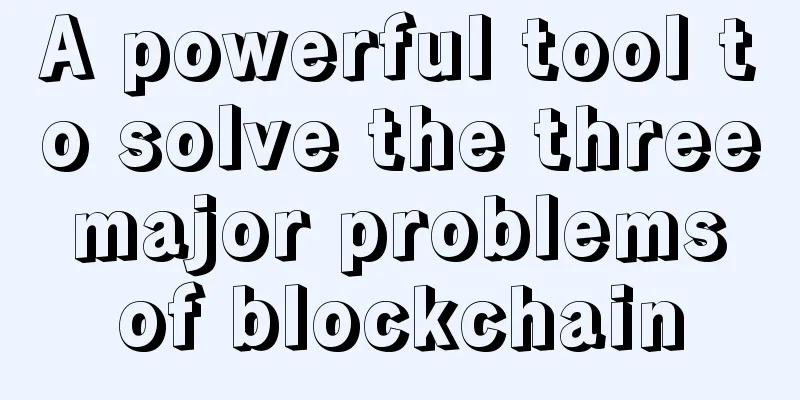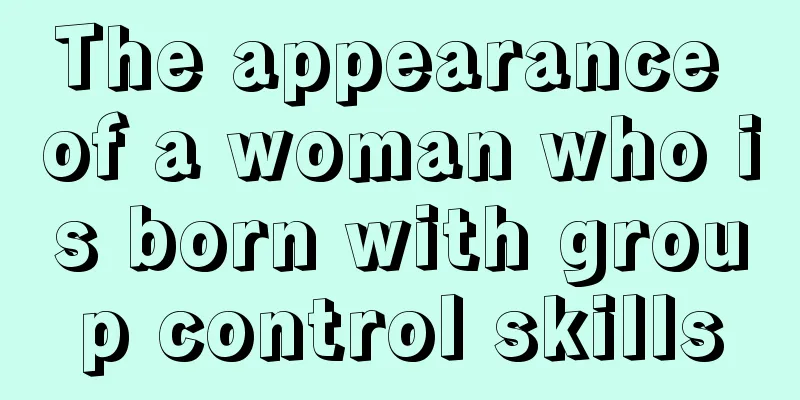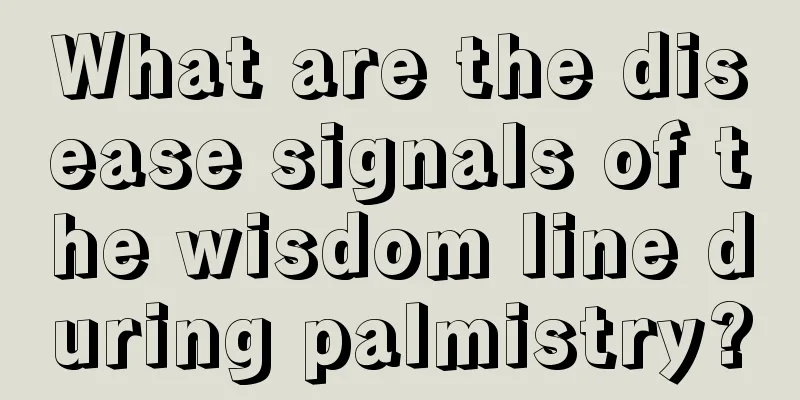A powerful tool to solve the three major problems of blockchain

|
Although blockchain technology is developing rapidly and becoming more mature, many companies still have some concerns about applying blockchain, mainly because traditional blockchain technology still has many problems in commercial applications, especially financial applications. The three biggest problems are 1. Trading performanceFor commercial applications, transaction throughput and latency are the transaction performance indicators that enterprises are most concerned about. Financial institutions often complain that blockchain cannot do high-frequency transactions. Indeed, the transaction frequency of Bitcoin blockchain is about 6.67 times/second, each transaction requires 6 blocks to confirm, and it takes 10 minutes to generate a block. It takes 1 hour for the entire network to confirm a transaction. This is definitely difficult to accept in many use scenarios. Let's see which links can optimize transaction performance. The main factors that affect the transaction performance of blockchain include broadcast communication, information encryption and decryption, consensus mechanism, transaction verification mechanism and so on. Broadcast communication : Since one of the core technologies of blockchain is P2P network, the efficiency of P2P network communication is very important for performance. First of all, in order to maximize the improvement of transaction performance, Elwin recommends that you use consortium chain instead of public chain. If your application is a high-frequency application, if you run a public chain based on Bitcoin or Ethereum, the user experience will be poor. Since the public chain must maintain a high degree of decentralization, the node software must be able to run on a standard consumer-grade computer, and the performance and network conditions of each node machine vary greatly, resulting in a natural limitation on transaction performance. For the consortium chain, we can specify the physical configuration and number of nodes of the node machine, and try to connect them with a high-speed network, which can greatly improve the transaction performance of the blockchain. Information encryption and decryption : Information encryption and decryption is a key link in the blockchain, mainly including hash functions and asymmetric encryption algorithms. Hash functions currently include SHA family algorithms, MD5, SCRYPT, RIPEMD, WHIRLPOOL, CUCKOO HASH, HAVAL, Tiger, LYRA2, Equihash, Hashimoto, Dagger, Ethash (the algorithm under Ethereum's current Pow mechanism), and other algorithms, as well as the series and parallel use of these algorithms. Since commercial applications generally do not consider mining issues and focus more on performance issues, Elwin recommends that you use the commonly used SHA256 algorithm as the main algorithm. As for the asymmetric encryption part, there are mainly asymmetric encryption algorithms including RSA, DSA, elliptic curve algorithms, etc. Blockchain generally uses elliptic curve algorithms, including ECDSA and SCHNORR, as well as national secret algorithms (SM2 elliptic curve public key cryptography algorithm, SM3 cryptographic hash algorithm, SM4 block cipher algorithm). Among them, the signature algorithm used by Bitcoin is ECDSA, and the verification speed of Schnorr signature is faster than that of ECDSA signature, and the size of this signature can be smaller, and it natively supports multiple signatures. Consensus mechanism : The consensus mechanism is a set of mechanisms designed by the distributed ledger to ensure the accuracy and consistency of the stored information. The design of the mechanism is mainly determined by the business and performance requirements. From PoW to PoS to DPoS and various Byzantine fault-tolerant algorithms, the consensus mechanism is constantly innovating, and the performance of the blockchain platform has been greatly improved. Under a consensus mechanism similar to DPoS or PBFT, the confirmation of transactions on the blockchain is very fast, and the transaction throughput also meets the existing financial transaction scale. The performance of some private chains reaches 10,000 transactions per second, which can meet most business needs. Transaction verification : From the perspective of transaction verification mechanism, there are currently several optimization methods: 1. Sharding: The general idea is that each node only processes a part of the transactions, such as transactions initiated by a part of the accounts, thereby reducing the computing and storage burden of the node. 2. Lightning Network and State Channels. These two strategies are to keep the underlying blockchain protocol unchanged, execute transactions off-chain as much as possible, and solve the scalability problem by changing the protocol usage. Under this strategy, the distributed ledger only records coarse-grained ledgers, and the truly fine-grained bilateral or limited multilateral transaction details are not recorded as transactions on the distributed ledger. 3. Beihang Chain has designed unique ABC (account blockchain) and TBC (transaction blockchain). When a new bank is established or an existing bank needs to be expanded, ABC can be set up to solve the problem; when the transaction volume is large, the system can increase TBC to increase the processing speed. These two ways are used to solve the scalability needs. From Bitcoin to Ethereum, from Ripple to HyperLedger fabric or Corda, the innovation of consensus algorithms and the deployment of alliance chains have greatly improved performance such as throughput. The current latency can be controlled at the second level, and the throughput reaches 10,000 transactions per second. The storage space requirements of a single node can also be optimized and compressed accordingly, and the performance bottleneck has been gradually broken through. 2. Privacy ProtectionIn the public blockchain, every participant can obtain a complete data backup, and all transaction data is open and transparent. This is an advantage of the blockchain, but on the other hand, it is fatal to many blockchain application parties. Because in many cases, not only do users want their account privacy and transaction information to be protected, but for commercial organizations, many accounts and transaction information are important assets and business secrets of these organizations, and they do not want to be shared publicly with peers. Bitcoin's solution to privacy protection is to achieve anonymity by isolating the association between the transaction address and the real identity of the address holder. So although the sender and receiver addresses of each transfer record can be seen, they cannot be matched to a specific person in the real world. However, such protection is very weak. By observing and tracking the information of the blockchain, the association between the account and the transaction can still be traced through the address ID, IP information, etc. In order to solve the privacy protection problem of blockchain, there are currently several methods such as coin mixing, ring signatures, homomorphic encryption, and zero-knowledge proof. CoinJoin : CoinJoin is to break the relationship between input and output addresses. In a transaction, if there are many people involved, including a large number of inputs and outputs, it will be difficult to find the corresponding pairs of each person in the input and output. In this way, the connection between input and output is actually broken. Multiple coin mixing, each time with a small amount of coins, will have a better effect. Ring signature : Ring signature is a simplified group signature, which is named because the signature is composed of a ring with certain rules. In the ring signature scheme, a member of the ring uses his private key and the public key of other members to sign, but does not need to obtain permission from other members. The verifier only knows that the signature comes from this ring, but does not know who the real signer is. Ring signature solves the problem of complete anonymity of the signer. Ring signature allows a member to sign on behalf of a group of people without leaking the signer's information. In darknet coins, its ring signature is a coin mixing service on the block chain. This coin mixing has the same amount of input and uses multiple other people's public keys. It is only known that it was sent from one of the group of people, but it is impossible to determine which one it is, and it is impossible to determine the input and output pairs through amount analysis. Homomorphic encryption : Homomorphic encryption is a method of performing computations without having to decrypt the encrypted data in advance. It provides a much-needed way to use blockchain technology on an existing basis. Using homomorphic encryption to store data on a blockchain achieves a perfect balance without causing any significant changes to the properties of the blockchain. In other words, the blockchain is still a public blockchain. However, the data on the blockchain will be encrypted, so the privacy issues of the public blockchain are taken care of, and homomorphic encryption technology gives the public blockchain the privacy effects of a private blockchain. Zero-knowledge proof (ZKPs) : ZKP is a cryptographic technique that allows two parties (prover and verifier) to prove that a proposal is true without revealing any information other than that it is true. In cryptocurrencies and blockchains, this usually refers to transaction information data. Zcash and Zcoin both introduced zero-knowledge proofs, and Zcoin and Zcash are the only two remaining cryptocurrencies that use zero-knowledge proofs to achieve zero-knowledge anonymity. In the consortium chain, in addition to algorithm processing, there are also other special methods of privacy data protection. 1. The Enigma system breaks data into fragments and then uses some clever mathematical methods to mask the data. It is impossible to get the data from each fragment alone, and you can't get the original data back. Because a lot of commercial data is very sensitive, institutions can't easily share data for research, but if you just use machine learning models or predictive models to run specific data analysis, there will be no such concerns, which will be groundbreaking. 2. Many consortium chains allow the end users of the system to control the information they interact with and share with the environment, requiring their transactions to be invisible to other companies, and their industry partners to not have the right to share confidential information. For example, in fabric, transaction privacy is achieved through two attributes of unauthorized users: one is transaction anonymity, where the owner of the transaction is hidden in a component called an anonymity set; the other is that transactions cannot be linked, and two or more transactions of the same user cannot be linked. Finally, Elwin needs to remind you that privacy transactions will cause certain transaction performance issues, and you need to pay attention to the balance between privacy protection and transaction performance. III. SupervisionThe transparency and decentralization of blockchain are difficult to be fully accepted by governments, regulators, and even trading levels. So how can blockchain allow governments and regulators to properly participate in its supervision without harming the interests of commercial organizations and avoiding reduced efficiency? In the fabric system, the general ledger can audit all or part of the general ledger entries according to the prescribed rules. In cooperation with participants, auditors can obtain a view of the general ledger through time-based certificates, connecting transactions to provide actual asset operations. Fabric uses the hierarchy of keys to control the audit permissions that will be given to auditors to check certain transactions and a group of transactions, and only discloses the most relevant keys to the auditing entity to provide the possibility of controlled auditing. Application auditors who are not members of the system can be given the means to passively observe blockchain data, while ensuring that they are only given transactions related to the audited application. When Corda was launched, it was positioned as a blockchain used to record, manage and synchronize financial agreements between regulated financial institutions. It directly designed nodes responsible for supervision and monitoring operations. Regulators are also on the Corda ledger. Transaction information is verified by specific transaction parties without the need for a large group of validators who are not related to the transaction. Qtum has designed many options for the role of regulator, introducing digital identity and third-party credit reporting platforms, and designing a new type of contract - the master contract, to introduce the role of regulator. At the same time, the regulator can serve as the provider of metaphors and data sources in the Qtum system. Chain is built to support large-scale financial applications, running a permissioned blockchain network while meeting the strict regulatory, security and privacy requirements of the financial services industry. Chain's private solution encrypts blockchain data and allows selective reading by relevant counterparties and regulators. The regulation of blockchain, to a certain extent, is to promote the better implementation of blockchain commercial applications and provide compliance protection, but excessive regulation may also destroy blockchain, so we need to strike a balance. At the same time, regulators should keep up with the pace of innovation and adopt an open and inclusive attitude to carry out effective new forms of regulation. |
<<: Introduction to the development technology of encrypted digital currency
>>: Coin Zone Trends: Bitcoin Price Trends Based on Big Data This Week (2016-11-18)
Recommend
What kind of people do you dislike?
What kind of people do you dislike? When somethin...
f2pool launches ZEL
As everyone knows, F2Pool has always been the fas...
What kind of face will make you richer and more comfortable in your old age?
What kind of face will make you richer as you get...
Does the location of a mole really have anything to do with destiny? What kind of destiny does a mole have in different locations?
In fact, sometimes fate is indeed linked to the l...
Find the classic facial features of a woman who will bring good luck to her husband from facial features!
"Wangfu" means being able to help the h...
A picture of a woman with a mole on her right palm
Most people have moles located on different parts...
What does a mole in the inner corner of the eye mean?
What does a mole on the inner corner of the eye m...
What kind of mouth shape is a symbol of wealth in physiognomy?
The article I want to share today is about mouth ...
Coinnice founder Xu Haifeng: Break the existing order and change the direction of Bitcoin investment
Coinnice is an emerging digital currency exchange...
How is the fortune of a man with a broken left palm? How is the fortune of a man with a broken left palm?
A broken palm is when the wisdom line and the emo...
The Palace of Illness is transformed into wealth_Face Analysis
The Palace of Illness is one of the twelve palace...
A woman who can do business
A woman who can do business High and broad forehe...
Interpretation of the four types of moles that represent wealth
Moles on different parts of the body symbolize di...
How to read the black mole on a man's face and fortune telling analysis
In physiognomy, there is a small field called mol...
Slock.it will continue to sell IOUs
Rage Comment : Regarding decentralized autonomous...









